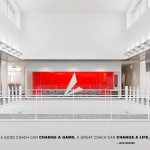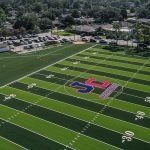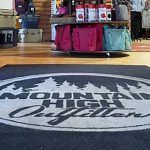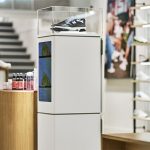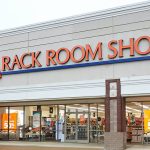The outdoor industry appears to have fared much better than the rest of the economy in the 2007 fourth quarter, according to a review of public company financial data for the period. The data is seen as an indicator that the outdoor market may still be more resilient than other markets during economic downturns, but the jury is still out on how the industry will weather the broader macro issues that face retailers, brands and consumers in the current year.
With Gander Mountain reporting results for its fiscal fourth quarter last week all retailers The B.O.S.S. Report presents an overview of fourth quarter industry results in the chart on page three. Results are posted for those companies that have reported for the period ended closest to the end of December, or in the case of most retailers, through January 2008. Still, because the report is not a clear picture of the entire industry, BOSS feels the total numbers are less significant than the trending information provided in the percentage increases and decreases.
After factoring in Jarden Corp.s acquisition of K2 Inc., consolidated sales for vendors serving the outdoor and snow sports market grew approximately 14.4% for the quarter. Softgoods provided most of the industrys growth for the fourth quarter, with sales rising 18%, led by strong sales gains at VFs Outdoor Coalition, Quiksilver, Crocs Footwear and Deckers Corp. The lone vendor to report lower sales was Timberland, which disclosed in early April that it was winding down its Miôn and GoLite footwear lines to focus on its core boot business.
Profits grew faster than sales on the softgoods side, or by 13.8%, despite a 60 basis point decline in gross margins. The GM deterioration came primarily as fast growing brands like Crocs and Volcom boosted investments to keep up with growth, while Quiksilver was hurt by the Rossignol acquisition. Many vendors were also unable to pass along higher costs incurred during the quarter due to the rising cost of fuel, China labor and the strengthening Chinese currency, which had an adverse effect on margins. Net income for the group rose 10.3% as Deckers nearly tripled its earnings thanks in large part to continued strong performance by its UGG line and favorable exchange rates. Continued >>>
Low- to high-double-digit growth at Crocs, Under Armor and VF Outdoor Coalition more than compensated for large net loss increases at Quiksilver and Rocky Brands. Those losses also cut overall softgoods return on sales by 50 basis points to 7.7% of sales.
Hardgoods vendors did not fare nearly as well during the quarter as the softgoods companies posted a sales decline 4.8% excluding the acquisition-driven strength at Jarden. The most dramatic declines were at Amer Sports Winter and Outdoor division and HEAD N.V., which were hurt by lingering 2006 snow sports inventory and a late winter. One exception was Easton-Bell, which posted an 8.4% gain in sales, but that reflected its March 2007 acquisition of Easton Sports.
Hardgoods profits were essentially flat on significantly lower gross margins, which fell 180 basis points during the quarter to 35.2%. Easton-Bell showed the biggest decline in gross margin as it continued to incur costs integrating Easton Sports. Net income for the Hardgoods group rose 32.6% when including Jarden in the results, but declined 39.7% without the company. Return on sales for the group declined by 30 basis points even with Jarden.
On the retail side, sales rose 15.5% with the biggest contributions coming from Dicks Sporting Goods, Forzani and GSI Commerce. Lululemon set the pace again by doubling sales, while e-tailer GSI posted the second highest growth rate. Timberland, West Marine, Gander Mountain and Big 5 all posted the biggest sales declines for the quarter though for varying reasons.
Gross profits rose by 14.0%, despite a 65 basis point drop in gross margins to 36.2%. Canadian companies Lululemon and The Forzani Group Ltd. emerged as the clear stars for the quarter. Good winters in the East helped boost sales at both companies, despite the strength of the Canadian dollar.
Not only was Lululemon the only company to improve its gross margins, but it improved them by 270 basis points. Forzani, meanwhile, posted a 10.6% increase in comp stores sales, increased its net income by 36% and raised its return on sales by 100 basis points to 7.0%. The biggest decline in margins was at Sport Chalet, followed by The Walking Co., Cabelas and West Marine.
Retailers' net income deteriorated substantially during the quarter, falling 36.8% as their return on sales fell from 7.0% to 3.8%. However, GSIC accounted for nearly 60% of the decline because a one-time tax benefit inflated its Q4 2006 earnings. Results were further skewed by West Marine, where losses increased more than five fold due largely to weak power boating sales. Sport Chalet swung from a profit to a loss.
Inventories, not including Jarden, were up significantly at both the vendor and retail level at year end. How much of that reflected confidence in a strong spring versus lingering winter inventory is hard to say.
On the vendor side, fast growing Crocs and Under Armor accounted for two-thirds of a 27.9% increase in inventory. Dicks accounted for 45% of the increase, reflecting both its Nov. 30 acquisition of Chicks Sporting Goods and its aggressive store expansion.
Some of the quarters trends clearly reversed in the first quarter. Growth at Crocs, which drove much of the growth in the outdoor business last year, is clearly slowing. Last week, the company lowered its revenue target for 2008 by about 10% (see page 4). Late but heavy snow, meanwhile, spurred strong fill-in and preseason orders for ski and snowboard gear from December through March, particularly with specialty stores. Chain stores, however, appear to have marked down ski and snowboard apparel and hardgoods aggressively in March, according to data provided by SportsScanINFO (BOSS_0815).

